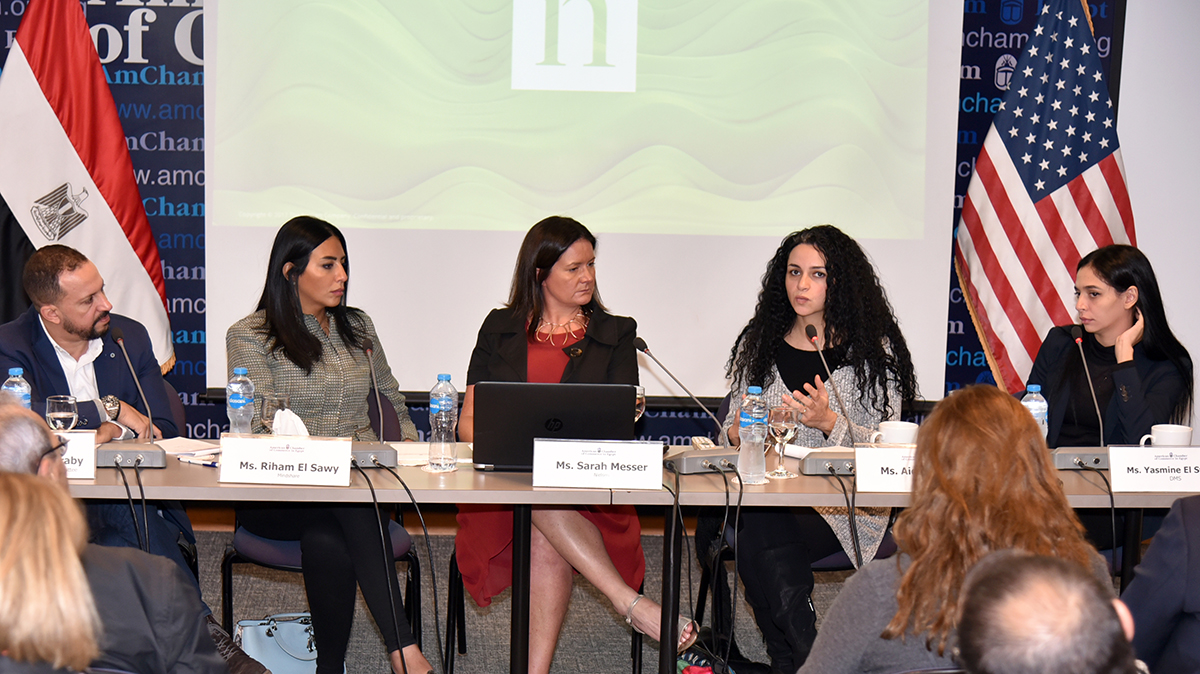
Connectivity is growing at a rapid pace around the globe, and it’s raising the stakes for marketers vying for consumers’ attention on a widening range of devices and platforms. This was the key topic at a recent panel discussion hosted by the Egypt Chapter of the American Chamber of Commerce. The panelists charge? Dissect the why and the how of implementing effective media measurement.
“The living room of a household with two adults and two children can easily have a couple of tablets, three smartphones, a games console, and on top of the TV; there are already seven different screens at one time that the family are engaging with. There are now more screens in the average living room than there are cushions,” noted Sarah Messer, Director of Media for Nielsen MENAP. She continued, “Driven by technology, the media channels people are engaging with has moved them from a one-channel transactional relationship, into a conversational and multidimensional, many channel relationship.”
Over the course of the discussion, which was attended by leaders in media and fast-moving consumer goods (FMCG), there was a unanimous agreement that there is a gap when it came to accurately measuring effectiveness of marketing spend on media—whether on the type of medium or time of day.
Using the U.S. viewing behavior as a starting point, Messer revealed that the first-quarter Nielsen Total Audience Report found that consumers are spending over 11 hours a day consuming media; traditional TV and radio remained constant over three quarters from third-quarter 2017, while digital is driving the growth. In fact, time spent on digital platforms is approaching 4 hours a day. Over 60% of that time is spent on application/web access via a smartphone.
Time spent across all media in first-quarter 2018 increased 19 minutes from the prior quarter. This increase in media time is driven by more time on TV-connected devices (+5 minutes) and with digital platforms (+13 minutes). Live+Time-shifted TV viewing remained relatively stable at four hours and 46 minutes a day.
When compared to key countries measured by Nielsen, the numbers can be different but the story is the same: Traditional TV is the stable, while digital is driving growth.
Messer also noted, “Our recent experience with Radio Audience Measurement in the UAE challenged a lot of ‘facts’ that were believed to be true from a marketing perspective. For example, it was believed that the only high time for radio listening are the morning and evening rush hour; but with measurement we found that late night listening counted for a third high listening peak! Consequently programming has changed, advertising budgets have been re-allocated and we keep on going on the way to efficiency.”
Radio audience measurement in the UAE, which Nielsen launched in September 2017, has provided the market with much-needed clarity around who’s listening and when. Previous to independent, third-party measurement, radio stations would have little more than personal estimates and guesses about when specific listeners were tuned in and for how long.
Riham El Sawy, managing director at Mindshare, illustrated the benefit of measurement through an example whereby Mindshare learned through measurement when the optimal time was to run an ad campaign for an e-commerce platform. As it turns out, the most sales came during “off-peak” listening hours, insight the team wouldn’t have garnered without measurement.
So what’s next for Egypt?
Messer concluded: “Know your audience. Measure your audience. Know what drives them to you, know what drives them away. Know how many of them there are, how their lives are lived out every day, how they think, their desires and aspirations, their behaviour. Because how can you achieve those business objectives of growing revenues, without understanding and measuring them? So that you can speak to them in their language, in their words, in the very place they are going to be, with messages that make sense and hit home and drive action.”
